Government Lawsuits Against Opioid
Distributors & Manufacturers

It’s estimated that more than 55,000 Americans die each year from a drug overdose, which has become the leading cause of death of individuals under the age of 50. Sixty percent of these deaths are caused by opioids. The jump in fatalities over the past 15 years has been staggering, a more than three-times increase.
In addition to the devastating toll this epidemic is taking on the addicts, family, and friends, the monetary cost to government agencies is in the tens of billions of dollars each year when considering public healthcare, treatment facilities, law enforcement, criminal justice, and jail expenses. The United States Centers for Disease Control and Prevention estimates the cost is approximately $75 billion per year.
Why are States, Counties & Cities Suing Opioid Distributors & Manufacturers?
Thousands of government entities are suing wholesale and retail distributors and manufacturers of opioids seeking reimbursement for government spending arising out of opioid addictions and overdoses.
The defendants often include companies such as McKesson Corporation, Cardinal Health, AmerisourceBergen, Purdue Pharma, Janssen Pharmaceuticals (a subsidiary of Johnson & Johnson), Endo International, Teva Pharmaceutical, Allergan (formerly Actavis), Watson Pharmaceuticals, Covidien, Johnson & Johnson, CVS, Walgreens, and Rite Aid.
The complaints typically allege the distributors violated the federal Controlled Substances Act by failing to alert the U.S. Drug Enforcement Administration of suspicious opioids purchases, such as orders of unusual size, frequency, or pattern. The claims against the manufacturers are based on allegations the companies exaggerated the benefits of the medication and knew the drugs were being overly prescribed, yet failed to warn doctors of the extremely addictive nature of the narcotics and the need to strictly limit the dose.
The lawsuits also claim the pharmaceutical companies lobbied politicians and doctors in an effort to artificially increase the use of opioids and willfully allowed the drugs to enter the black market. For example, in 2012, there were 793 million doses of opioids prescribed in Ohio, which is 60-times larger than the entire population of the state. In 2010, 254 million prescriptions for opioids were filled in the United States, which amount was capable of treating every adult in the country 24-hours a day for one month.

Damages Being Sought in Government Opioid Claims:
Government agencies are seeking reimbursement for some of the health and social costs related to opioid abuse, which is estimated to be in excess of $55 billion each year.
Some of the specific damages being sought include:
- Building and maintaining treatment facilities.
- Reimbursement of Medicaid and other governmental expenses related to the treatment of addicts, including the payment for unnecessarily prescribed opioids, and the antidote to treat overdoses.
- Reimbursement for added law enforcement and medical personnel to treat the opioid epidemic.
- Reimbursement for costs of prosecutions and jails.
Government Settlements with Opioid Wholesale Distributors & Manufacturers
In 2019, opioid distributors McKesson Corp., AmerisourceBergen, and Cardinal Health, and drug manufacturer Teva Pharmaceuticals, agreed to a $260 million settlement with Cuyahoga and Summit counties in Ohio. To read more, click Washington Post
In 2019, OxyContin manufacturer Purdue filed for bankruptcy as part of an estimated $12 billion settlement with state and local governments. As part of the proposed settlement, the Sackler family agreed to pay at least $3 billion in the settlement plus contribute the company itself, and its future profits, to the bankruptcy trustee. To read more, click AP News
In 2019, an Oklahoma judge ruled that Johnson and Johnson must pay the state of Oklahoma $572 million, stating: “The defendants caused an opioid crisis that is evidenced by increased rates of addiction, overdose deaths, and neonatal abstinence syndrome.” To read more, click CNN
In 2017, McKesson Corporation, one of the nation’s largest distributors of pharmaceuticals, paid a $150 million civil penalty for violations of the Controlled Substances Act. McKesson was failing to report “suspicious orders” for oxycodone and hydrocodone, such as orders that were suspicious in frequency, size, or other patterns. To read more, click Justice Department McKesson

In 2017, Mallinckrodt Plc, a manufacturer of oxycodone, agreed to pay $35 million to resolve U.S. investigations into its monitoring and reporting of suspicious orders of controlled substances. To read more, click Reuters
In 2017, Costco Wholesale reached an $11.75 million settlement to resolve allegations that its pharmacies violated the Controlled Substances Act when they improperly filled prescriptions for controlled substances. To read more, click Justice Department CoscoI
n 2017, Cardinal Health reached a settlement in the amount of $20 million with the state of West Virginia regarding the company’s distribution of opioids in state between 2007 and 2012. “Cardinal and other wholesalers in a six-year period sent 780 million hydrocodone and oxycodone pills to West Virginia – 433 per state resident . . . . In that time, there were 1,728 fatal overdoses from the addictive painkillers.” To read more, click Columbus Business First
In 2016, Cardinal Health, Inc. agreed to pay $44 million to the United States to resolve allegations that it violated the Controlled Substances Act in Maryland, Florida and New York by failing to report suspicious orders of controlled substances to pharmacies located in those states. To read more, click Justice Department Cardinal Health
In 2015, Purdue Pharma, the maker of OxyContin, agreed to pay the state of Kentucky $24 million to settle a lawsuit accusing the company of misleading the public about the addictiveness of the prescription opioid. To read more, click CBS News
The Human Side of the Opioid Epidemic:
Approximately 2 million Americans are currently addicted to opioids, with more than 90 million Americans having used a prescription painkiller in the past year. The most commonly used are hydrocodone (such as Vicodin, Lorcet & Lortab), Oxycodone (such as OxyContin, Percodan & Roxicet), methadone, fentanyl, and morphine.
The number one opioid killer appears to be fentanyl or an analog (variation), especially when it is combined with heroin or cocaine. Fentanyl is 50 to 100 times more potent than morphine, and 30 to 50 times more potent than heroin. One fentanyl analog, Carfentanil, is 5,000 times stronger than heroin. An amount as small as a few drops of sand can be fatal. The drug is so powerful that even when numerous doses of the antidote naloxone (Narcan) are timely administered, the person will be lucky to survive.
The picture of the homeless man living on the streets is not the accurate portrayal of the modern-day addict. Instead, the portrait is one of individuals of all ages, race, ethnicity, education and socioeconomic status. White, working-class, individuals living in rural areas make up one the largest subset of deaths.

Ready to find out more?
Drop us a line today to set up your consultation.
Click HereMeet Our Attorneys
The Aloia Roland practice areas are shaped by our attorneys’ diverse experience. Led by a talented team of trial attorneys, we function as a full-service law office and cater to our clients needs.

Evan D. Lubell

Ty G. Roland

Mark J. Joseph


